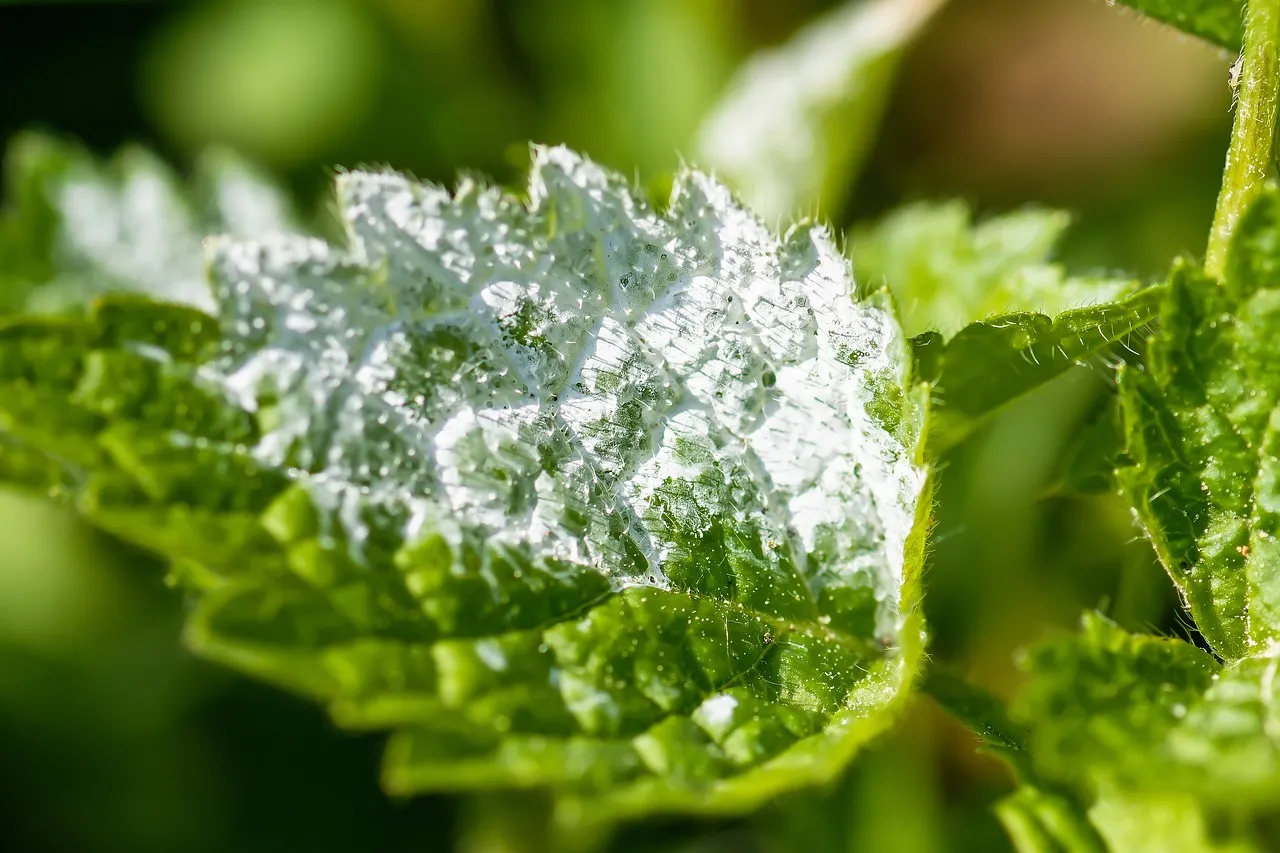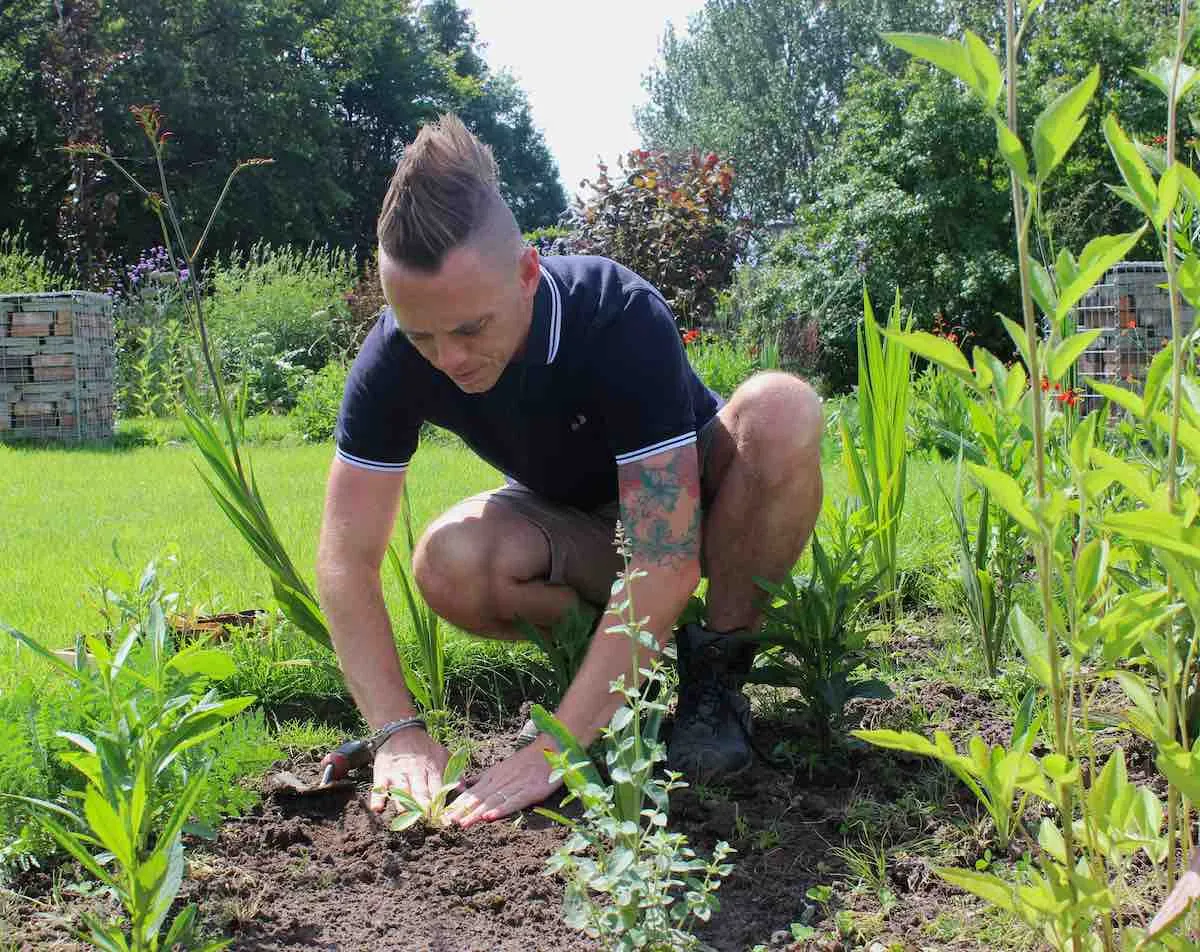Hi @saffy1984
Thanks for getting in touch about your Cherry laurel being white with holes nibbled out of them.
To answer why my cherry laurels are covered in white spots, this is usually mildew, a fungus caused by water stress in plants, especially if they have recently been planted.
Cherry laurel (Prunus laurocerasus) is susceptible to a fungal disease called powdery mildew, which appears as a white or greyish powder on the leaves. Powdery mildew thrives in warm, dry conditions with poor air circulation, although it can also develop in cool, damp weather. I would hazard a guess that when the plants are newly planted, they may have dried out slightly, and then the mildew has moved in as the plants are stressed.

The spores of this fungus can easily spread from plant to plant, especially if they are close together, and cherry laurels, with their dense foliage, are particularly vulnerable.
Here are some reasons cherry laurels get mildew and ways to prevent it:
Causes of Powdery Mildew on Cherry Laurel
- Poor Air Circulation: Dense planting and compact foliage trap moisture and reduce airflow, creating an ideal environment for mildew.
- Shade and High Humidity: Powdery mildew thrives in shaded, humid conditions, and cherry laurels planted in partial to full shade are at greater risk.
- Overhead Watering: Water sitting on leaves for prolonged periods can encourage mildew growth.
- Previous Infection: Fungal spores from prior infections can easily overwinter in leaf litter and infect new growth in spring.
Preventing and Managing Powdery Mildew
- Prune Regularly: Thin out dense branches to improve air circulation within the plant by selective pruning. This reduces humidity around the leaves and limits conditions favourable to mildew.
- Space Plants Appropriately: When planting cherry laurels, allow enough space between plants to improve airflow and reduce the likelihood of mildew spreading.
- Water at the Base: Watering from below (rather than spraying leaves) keeps foliage dry, reducing mildew risk. Avoid watering late in the day so leaves dry before nightfall.
- Use Fungicides: Apply a fungicide specifically for powdery mildew during the early growing season, especially if the plant has had previous mildew issues. Organic fungicides, like neem oil or sulfur-based sprays, can be effective and less harmful to the environment.
- Remove Infected Leaves: If you notice powdery mildew, remove and dispose of affected leaves to reduce the spread of spores. Be sure to clean up any fallen leaves around the base of the plant in the fall.
- Encourage Sunlight: If possible, plant cherry laurels in a location that receives some sunlight to reduce shade, as mildew is less likely to thrive in sunnier spots.
Aas for the spots it looks like the cherry laurels being stressed have then been susceptible to either a beetle or a leaf cutter bee.
What's causing holes in my cherry laurel?
Insect pests such as caterpillars, leaf beetles, and vine weevils are common culprits for causing holes in cherry laurel leaves. These pests typically chew irregular holes or edges on the leaves, sometimes creating ragged patches instead of neat, round holes. The damage often becomes visible in warmer seasons when pests are most active and if plants are stressed like yours are with powdery mildew.
One of the most frequent offenders is the vine weevil. These insects are known for chewing distinctive notches along the edges of leaves. While their feeding doesn’t typically destroy the entire leaf, the pattern they create is unmistakable. Caterpillars are another common pest and tend to chew larger holes through the leaf surface, sometimes consuming significant portions. Leaf beetles may also feed on cherry laurels, though they typically create smaller to medium-sized holes, depending on the beetle species.
For small infestations, manually removing visible pests like caterpillars and beetles can effectively control the damage. This approach works well if the pest presence is limited and manageable. For larger infestations, however, a mild insecticide may be necessary. Neem oil is another eco-friendly option that can deter many insects without harming beneficial organisms. Additionally, introducing beneficial nematodes to the soil can help control vine weevil larvae before they mature into adult beetles. These microscopic organisms target the larvae, protecting both the leaves and roots from damage as the larvae develop.
A spray of detergent, like washing-up liquid and water, can also help. It blocks the spikes on insects, causing them to suffocate—a bit brutal, I know.
Don't worry, though. Cherry laurel is super tough, and they will recover; water thoroughly and maybe give them a good compost mulch this autumn with peat-free compost.
https://youtu.be/ptBotSa2wpw
All the best
Lee Garden Ninja
Hi @saffy1984
Thanks for getting in touch about your Cherry laurel being white with holes nibbled out of them.
To answer why my cherry laurels are covered in white spots, this is usually mildew, a fungus caused by water stress in plants, especially if they have recently been planted.
Cherry laurel (Prunus laurocerasus) is susceptible to a fungal disease called powdery mildew, which appears as a white or greyish powder on the leaves. Powdery mildew thrives in warm, dry conditions with poor air circulation, although it can also develop in cool, damp weather. I would hazard a guess that when the plants are newly planted, they may have dried out slightly, and then the mildew has moved in as the plants are stressed.

The spores of this fungus can easily spread from plant to plant, especially if they are close together, and cherry laurels, with their dense foliage, are particularly vulnerable.
Here are some reasons cherry laurels get mildew and ways to prevent it:
Causes of Powdery Mildew on Cherry Laurel
- Poor Air Circulation: Dense planting and compact foliage trap moisture and reduce airflow, creating an ideal environment for mildew.
- Shade and High Humidity: Powdery mildew thrives in shaded, humid conditions, and cherry laurels planted in partial to full shade are at greater risk.
- Overhead Watering: Water sitting on leaves for prolonged periods can encourage mildew growth.
- Previous Infection: Fungal spores from prior infections can easily overwinter in leaf litter and infect new growth in spring.
Preventing and Managing Powdery Mildew
- Prune Regularly: Thin out dense branches to improve air circulation within the plant by selective pruning. This reduces humidity around the leaves and limits conditions favourable to mildew.
- Space Plants Appropriately: When planting cherry laurels, allow enough space between plants to improve airflow and reduce the likelihood of mildew spreading.
- Water at the Base: Watering from below (rather than spraying leaves) keeps foliage dry, reducing mildew risk. Avoid watering late in the day so leaves dry before nightfall.
- Use Fungicides: Apply a fungicide specifically for powdery mildew during the early growing season, especially if the plant has had previous mildew issues. Organic fungicides, like neem oil or sulfur-based sprays, can be effective and less harmful to the environment.
- Remove Infected Leaves: If you notice powdery mildew, remove and dispose of affected leaves to reduce the spread of spores. Be sure to clean up any fallen leaves around the base of the plant in the fall.
- Encourage Sunlight: If possible, plant cherry laurels in a location that receives some sunlight to reduce shade, as mildew is less likely to thrive in sunnier spots.
Aas for the spots it looks like the cherry laurels being stressed have then been susceptible to either a beetle or a leaf cutter bee.
What's causing holes in my cherry laurel?
Insect pests such as caterpillars, leaf beetles, and vine weevils are common culprits for causing holes in cherry laurel leaves. These pests typically chew irregular holes or edges on the leaves, sometimes creating ragged patches instead of neat, round holes. The damage often becomes visible in warmer seasons when pests are most active and if plants are stressed like yours are with powdery mildew.
One of the most frequent offenders is the vine weevil. These insects are known for chewing distinctive notches along the edges of leaves. While their feeding doesn’t typically destroy the entire leaf, the pattern they create is unmistakable. Caterpillars are another common pest and tend to chew larger holes through the leaf surface, sometimes consuming significant portions. Leaf beetles may also feed on cherry laurels, though they typically create smaller to medium-sized holes, depending on the beetle species.
For small infestations, manually removing visible pests like caterpillars and beetles can effectively control the damage. This approach works well if the pest presence is limited and manageable. For larger infestations, however, a mild insecticide may be necessary. Neem oil is another eco-friendly option that can deter many insects without harming beneficial organisms. Additionally, introducing beneficial nematodes to the soil can help control vine weevil larvae before they mature into adult beetles. These microscopic organisms target the larvae, protecting both the leaves and roots from damage as the larvae develop.
A spray of detergent, like washing-up liquid and water, can also help. It blocks the spikes on insects, causing them to suffocate—a bit brutal, I know.
Don't worry, though. Cherry laurel is super tough, and they will recover; water thoroughly and maybe give them a good compost mulch this autumn with peat-free compost.
All the best
Lee Garden Ninja
saffy1984 has reacted to this post.
 Lee Burkhill: Award Winning Designer & BBC 1's Garden Rescue Presenters Official Blog
Lee Burkhill: Award Winning Designer & BBC 1's Garden Rescue Presenters Official Blog



